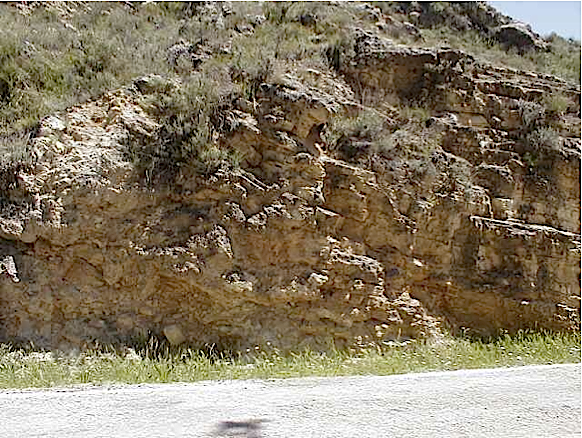In the impact literature, extended breccias comprising very large components are generally termed megabreccias. Megabreccias have been reported for other impact structures such as Wells Creek, Steinheim basin, Gosses Bluff, Sierra Madera, Wetumpka, and others. The giant Alamo megabreccia is also ascribed to impact although a related crater has not been identified so far.
In the Azuara impact structure, a megabreccia is exposed near Belchite/Almonacid de la Cuba and Herrera de los Navarros in the outer ring anticline built up of Mesozoic rocks (Fig.1). The deposits cover an area of some km², their thickness may exceed 80 m, and the largest components have a size of about 20 m (Figs. 5-7).
The most impressive occurrences of the megabreccia have been mapped in the northern ring zone of the Azuara impact zone near Almonacid de la Cuba and Belchite (Figs. 2, 3).
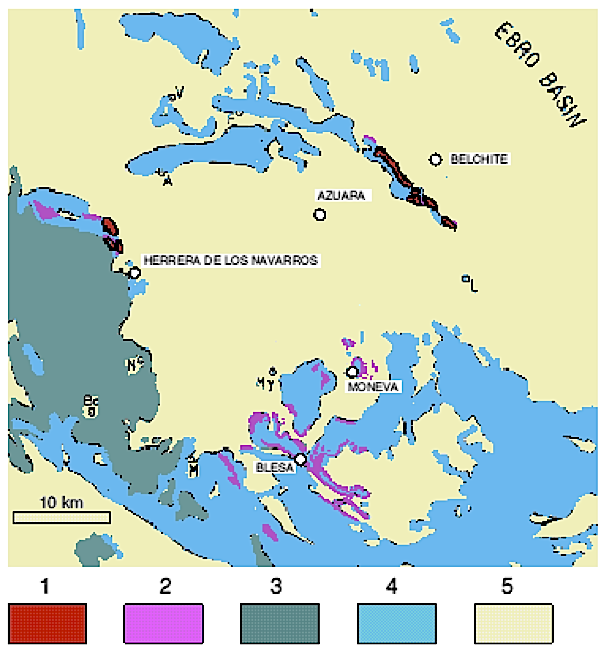 Fig.1. Geological sketch map of the Azuara impact structure showing the location of the megabreccia near Belchite and Herrera de los Navarros, and deposits of the Cortes de Tajuña Fm. studied in the Azuara area. 1 = megabreccia; 2 = Cortes de Tajuña Fm.; 3 = Paleozoic; 4 = Mesozoic; 5 = Cenozoic
Fig.1. Geological sketch map of the Azuara impact structure showing the location of the megabreccia near Belchite and Herrera de los Navarros, and deposits of the Cortes de Tajuña Fm. studied in the Azuara area. 1 = megabreccia; 2 = Cortes de Tajuña Fm.; 3 = Paleozoic; 4 = Mesozoic; 5 = Cenozoic
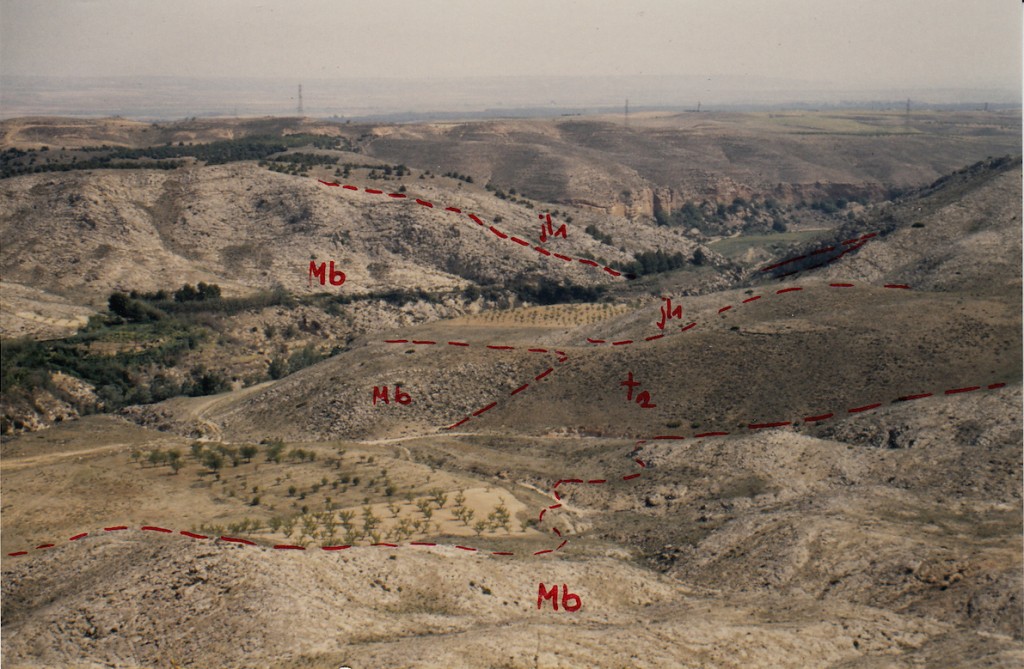 Fig. 2. View of the widespread megabreccia east of Almonacid de la Cuba in the impact structure ring anticline. Mb = megabreccia, t2 = Tertiary, jl1 = Liassic. Mapping and image Tanja Katschorek.
Fig. 2. View of the widespread megabreccia east of Almonacid de la Cuba in the impact structure ring anticline. Mb = megabreccia, t2 = Tertiary, jl1 = Liassic. Mapping and image Tanja Katschorek.
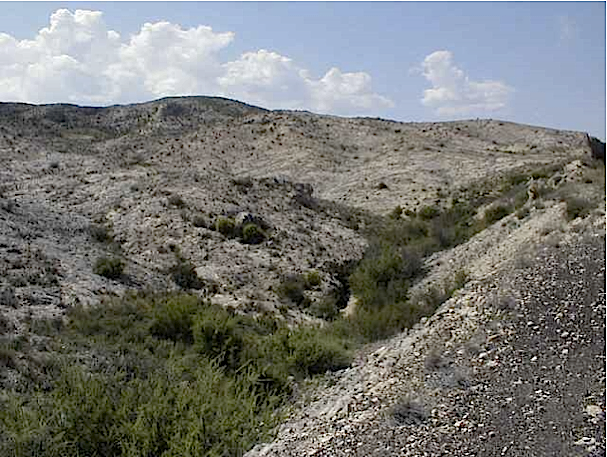 Fig. 3. Typical aspect of the megabreccia near Almonacid de la Cuba and Belchite. The megabreccia causes a strange landscape which is characterized by a smooth, hummocky and vegetationless surface and large breccia megablocks emerging from the ground (e.g., in the middle of the image).
Fig. 3. Typical aspect of the megabreccia near Almonacid de la Cuba and Belchite. The megabreccia causes a strange landscape which is characterized by a smooth, hummocky and vegetationless surface and large breccia megablocks emerging from the ground (e.g., in the middle of the image).
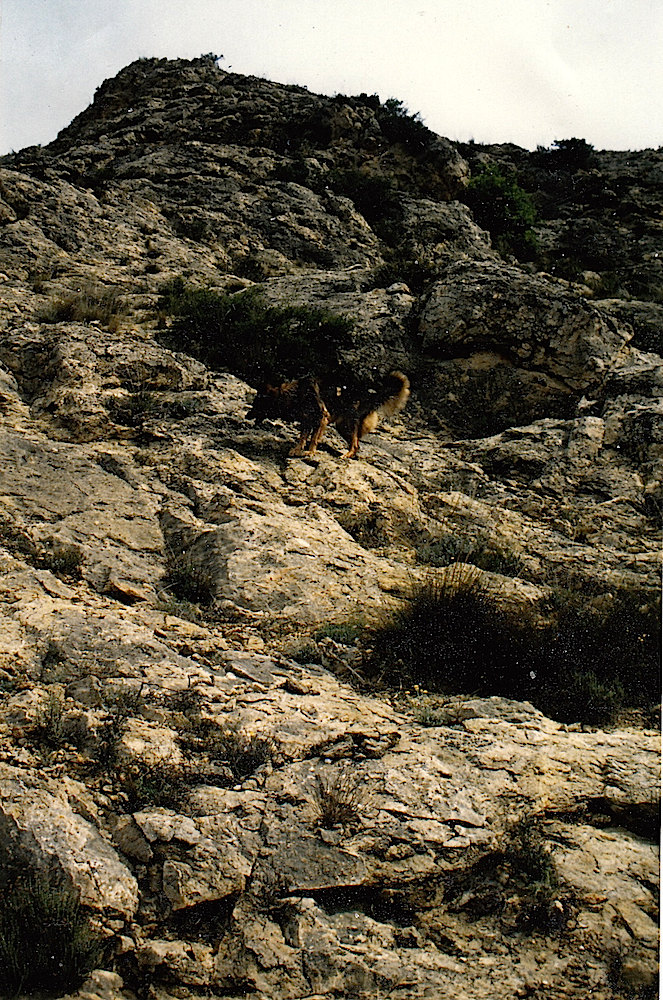 Fig. 4 Typical aspect of the megabreccia (3 km southwest of Belchite; photograph courtesy of Tanja Katschorek).
Fig. 4 Typical aspect of the megabreccia (3 km southwest of Belchite; photograph courtesy of Tanja Katschorek).
A peculiar observation has been made there by the locals for a long time: They are speaking of the hollow mountains (“los montes vasios”), and in fact on knocking the mostly vegetationless ground with the geologic hammer a typically hollow tone can be heard. It is very characteristic for the megabreccia and has obviously never made earlier local and regional geologists wonder. Strong loosening up of the carbonate rock texture by brecciation and decarbonization/melting can give an explanation (see below the text on the formation of the megabreccia).
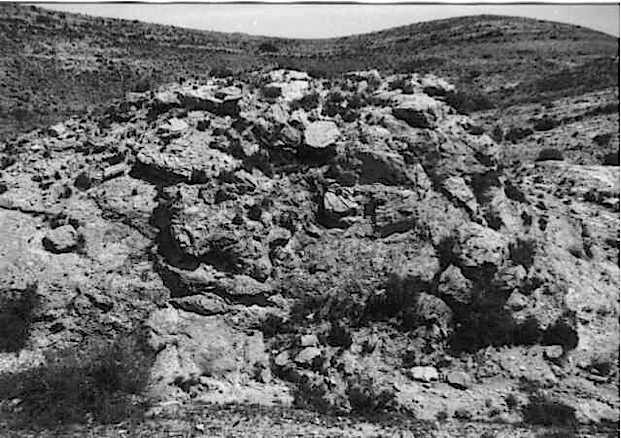 Fig. 5. Megaclast of 10 – 20 m size in the megabreccia near Almonacid de la Cuba. (photograph J. Fiebag †).
Fig. 5. Megaclast of 10 – 20 m size in the megabreccia near Almonacid de la Cuba. (photograph J. Fiebag †).
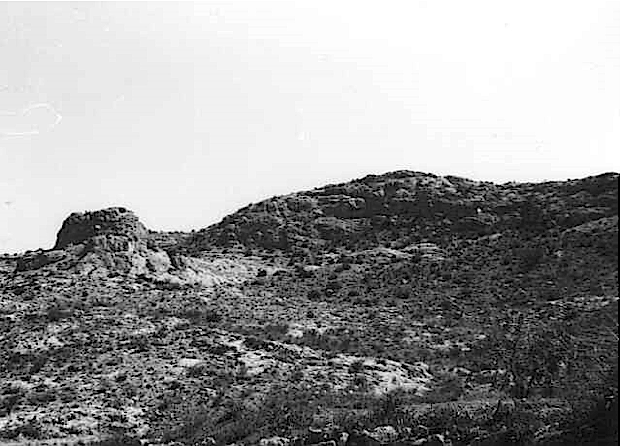 Fig. 6. Megaclasts of 10 – 20 m size in the megabreccia near Almonacid de la Cuba. (photograph J. Fiebag †).
Fig. 6. Megaclasts of 10 – 20 m size in the megabreccia near Almonacid de la Cuba. (photograph J. Fiebag †).
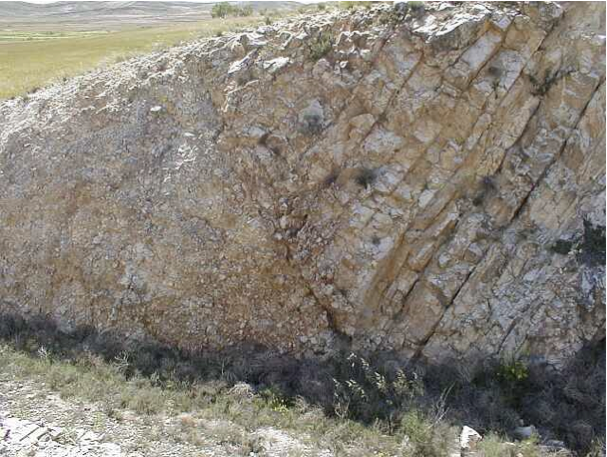 Fig. 7. Megaclasts exposed by the old railway cut through the megabreccia near Belchite. In the left-hand megaclast, the bedding has completely turned into a homogeneous gries brecciation.
Fig. 7. Megaclasts exposed by the old railway cut through the megabreccia near Belchite. In the left-hand megaclast, the bedding has completely turned into a homogeneous gries brecciation.
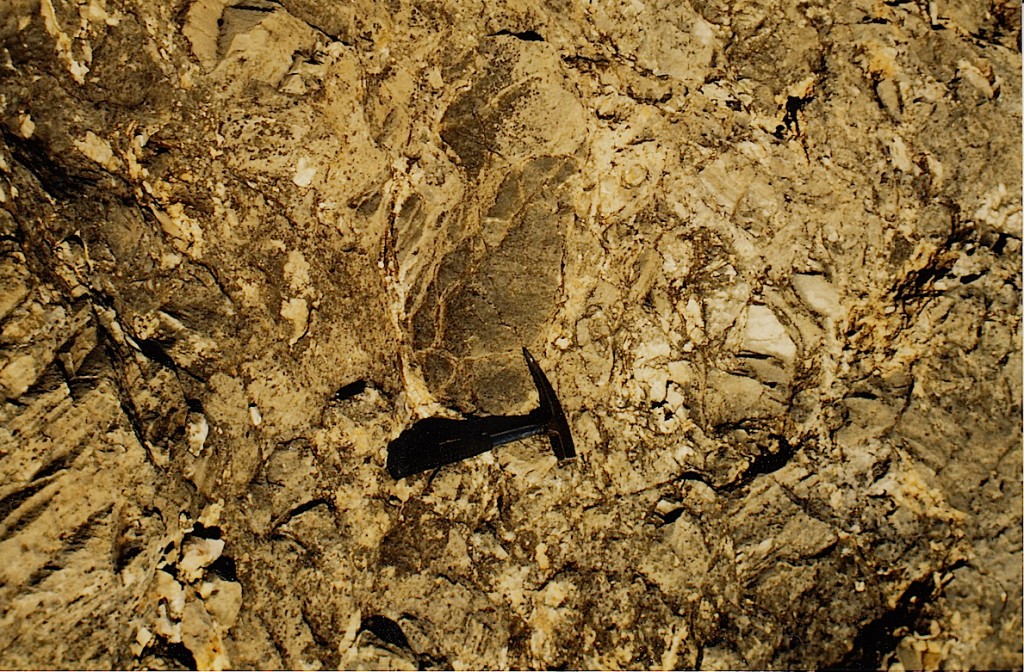 Fig. 8. Megabreccia exhibiting heavily damaged clasts in a flow texture. Image credit Tanja Katschorek.
Fig. 8. Megabreccia exhibiting heavily damaged clasts in a flow texture. Image credit Tanja Katschorek.
Lithologically, the Azuara megabreccia is a strongly heterogenous polymictic breccia composed primarily of carbonate clasts of all sizes (Figs. 5, 6, 7, 8). Occasionally, clasts of red shales (possibly Eocene) are intercalated. Breccia generations (breccias-within-breccias, Fig. 9) and mortar texture occur. The megabreccia is cut by polymictic breccia dikes of brownish-reddish color. Under the microscope, the fine-grained matrix shows cataclastic flow texture (Fig. 10).
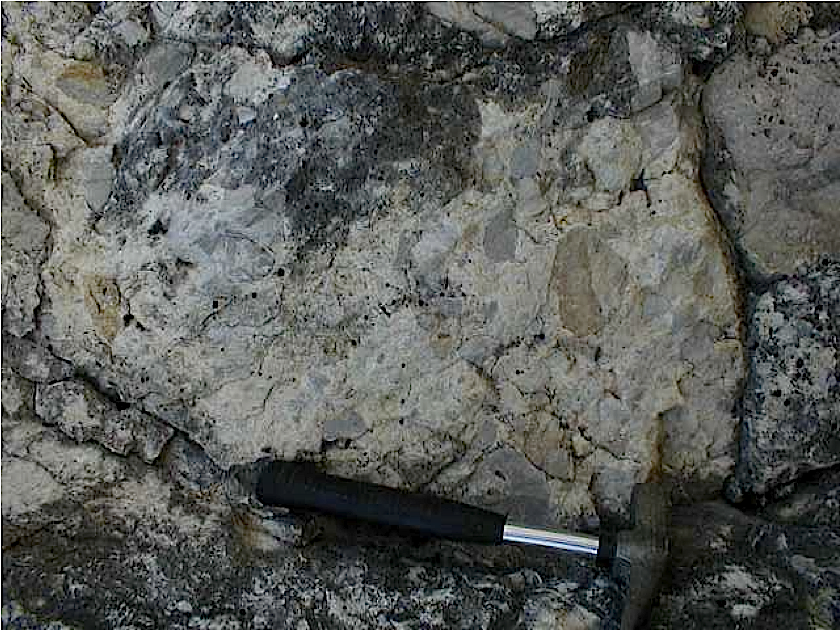 Fig. 9. Polymictic breccia component of the megabreccia (breccia-within-breccia); old railway cut near Belchite.
Fig. 9. Polymictic breccia component of the megabreccia (breccia-within-breccia); old railway cut near Belchite.
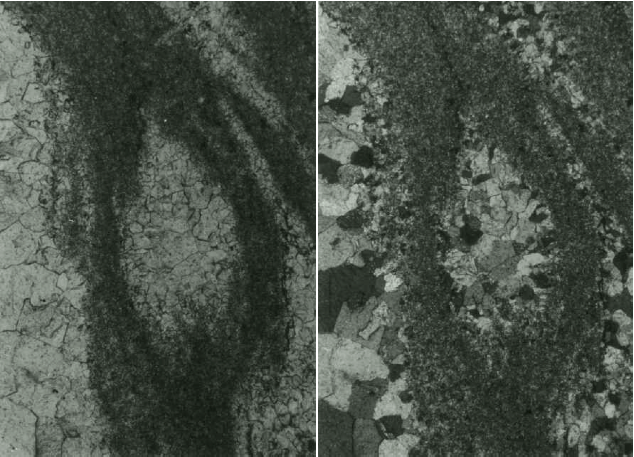 Fig. 10. Cataclastic flow texture in the megabreccia matrix. Photomicrograph (by J.Fiebag †), plane light (left) and xx nicols (right); the field is 600 µm wide.
Fig. 10. Cataclastic flow texture in the megabreccia matrix. Photomicrograph (by J.Fiebag †), plane light (left) and xx nicols (right); the field is 600 µm wide.
Stratigraphically, the megabreccia is intercalated between Triassic and Jurassic materials (see Figs. 11, 12).
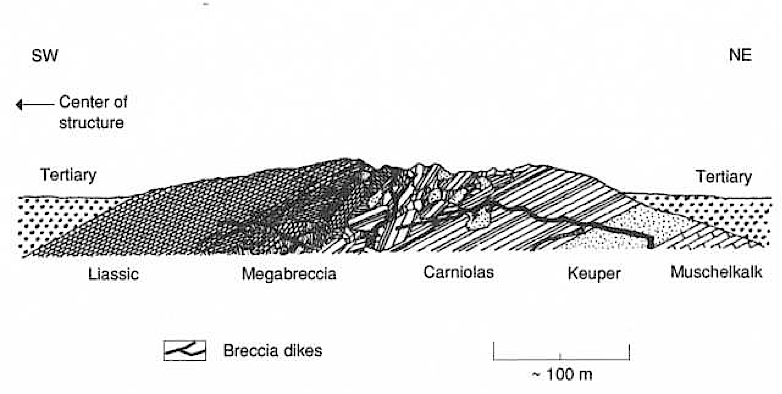 Fig. 11. Sketch of the megabreccia layering showing the stratigraphical units involved in the breccia formation (from Ernstson & Fiebag (1992, Fig.13).
Fig. 11. Sketch of the megabreccia layering showing the stratigraphical units involved in the breccia formation (from Ernstson & Fiebag (1992, Fig.13).
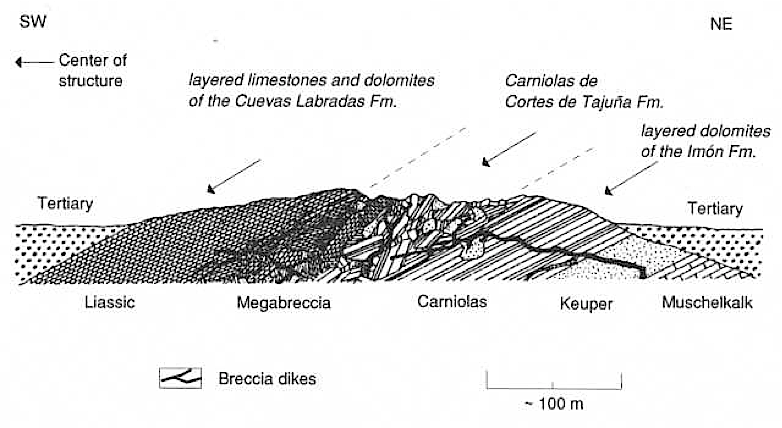 Fig.12. Sketch of the megabreccia showing at the top the interpretation of the layering by the opponents of an impact (redrawn and translated from Cortés & Martínez (1999, Fig.3)).
Fig.12. Sketch of the megabreccia showing at the top the interpretation of the layering by the opponents of an impact (redrawn and translated from Cortés & Martínez (1999, Fig.3)).
According to advocates of an endogenetic origin of the Azuara structure (Aurell et al., 1992; Aurell et al., 1993; Aurell, 1994; Cortés, 1994), this megabreccia corresponds to the Cortes de Tajuña Fm. (Goy et al., 1976) of Upper Triassic (Rhaetian) – Lower Jurassic age and well known in the Iberian system. Stratigraphically, this Fm. is located between the limestones of the Imón Fm. (Upper Triassic (Rhaetian)) and the Cuevas Labradas Fm. (Lower Jurassic; Upper Hettangian-Sinemurian-Lower Pliensbachian; see Fig.13). The origin of the Cortes de Tajuña Fm. is explained by three different models (Giner, 1978; Salas, 1986; San Román y Aurell, 1992):
- a. synsedimentary breccias originating from erosion processes at basin margins.
- b. collapse breccias by dissolution of evaporite layers intercalated within carbonate layers.
- c. brecciation by simultaneous evaporite dissolution, resedimentation, and collapse of carbonates in a system of unstable slopes.
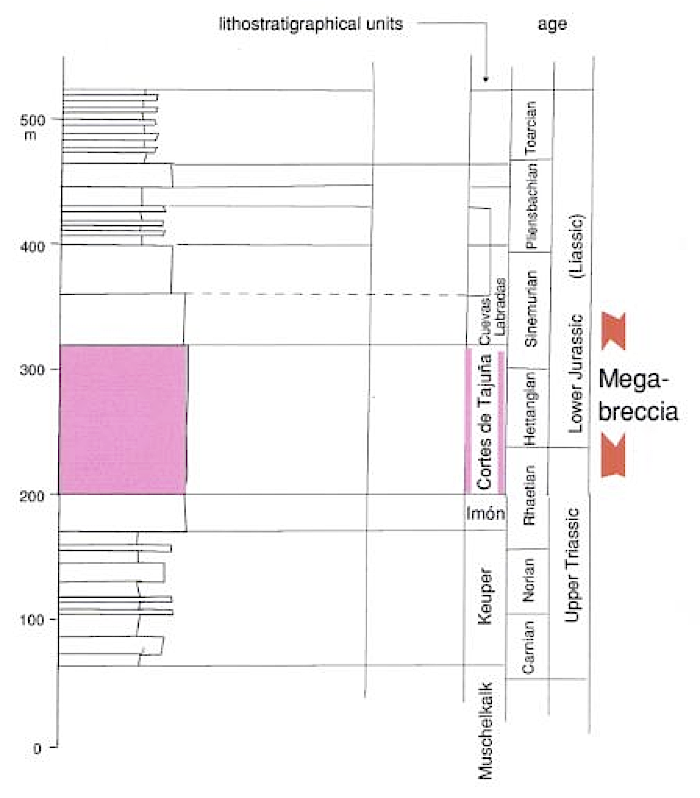 Fig.13: The stratigraphic position of the Cortes de Tajuña Fm. and the megabreccia. The stratigraphic column has been redrawn from Aurell et al. (2001).
Fig.13: The stratigraphic position of the Cortes de Tajuña Fm. and the megabreccia. The stratigraphic column has been redrawn from Aurell et al. (2001).
The Cortes de Tajuña Fm. can be studied at many other places (e.g., Figs. 14, 15) and has in detail be investigated by us also in the Azuara structure such as in the environs of Moneva and Blesa (see Figs. 16 – 21, and Fig.1). Nowhere at the locations investigated, we were able to see a polymict character of the Cortes de Tajuña Fm., blocks of the size of 10 m or more, breccia dikes (not to be confused with recent karstification at Blesa!), and cataclastic flow texture of the matrix enclosing the clasts.
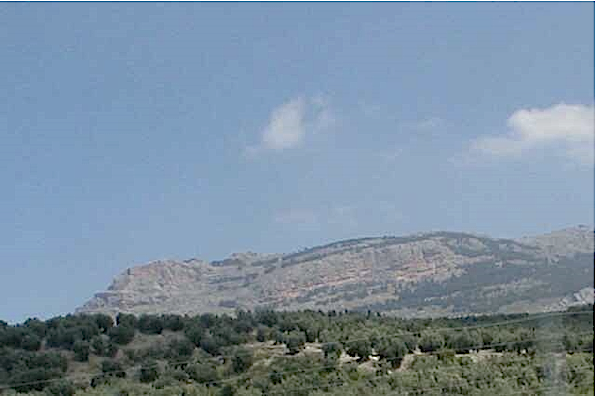 Fig. 14. Equivalent of the Cortes de Tajuña Fm. in the Betic cordillera. Road between Granada and Alcaudete (N-432).
Fig. 14. Equivalent of the Cortes de Tajuña Fm. in the Betic cordillera. Road between Granada and Alcaudete (N-432).
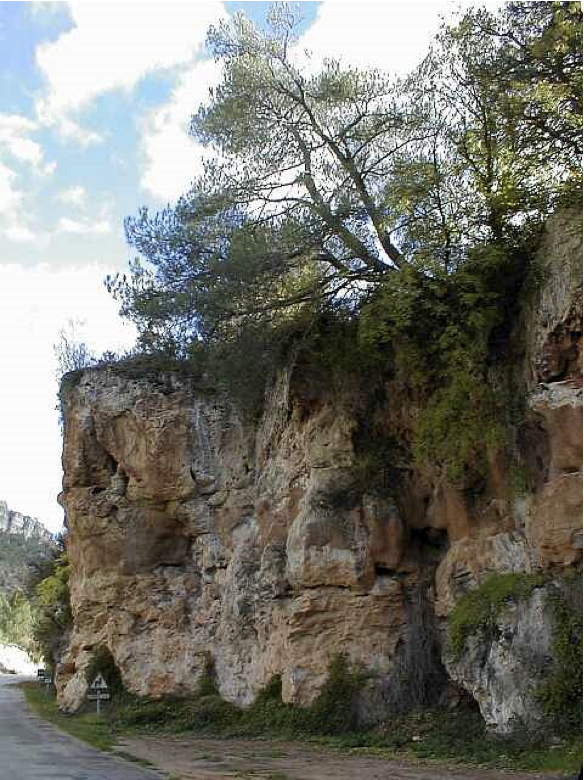 Fig. 15. Cortes de Tajuña Fm. c. 24 km southwest of Molina de Aragón (Province of Guadalajara).
Fig. 15. Cortes de Tajuña Fm. c. 24 km southwest of Molina de Aragón (Province of Guadalajara).
Fig. 16. Cortes de Tajuña Fm. at Blesa in the Azuara impact structure (location see Fig.1).
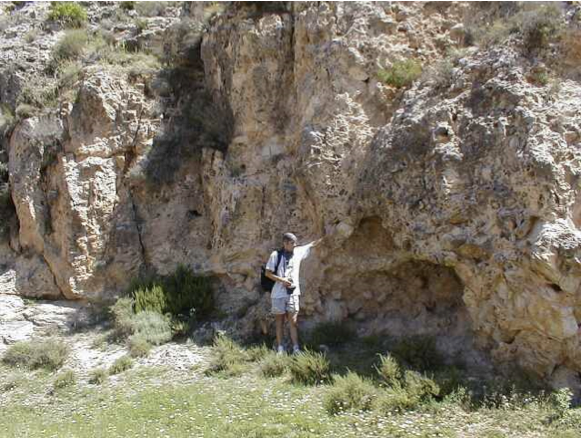 Fig. 17. Cortes de Tajuña Fm. at Moneva in the Azuara impact structure (location see Fig.1).
Fig. 17. Cortes de Tajuña Fm. at Moneva in the Azuara impact structure (location see Fig.1).
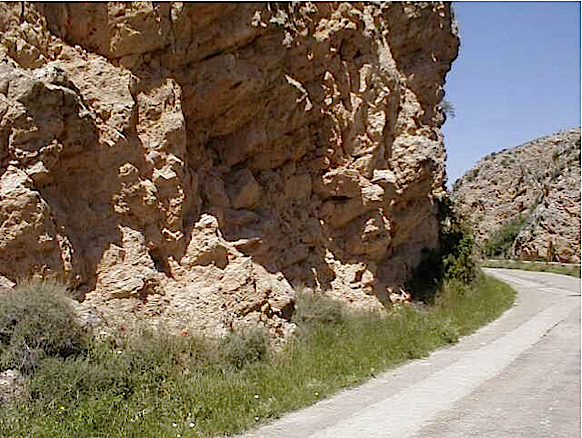 Fig. 18. Cortes de Tajuña Fm. at Moneva. The middle part of the photograph shows brecciation, but there are no clasts exceeding 2 m size.
Fig. 18. Cortes de Tajuña Fm. at Moneva. The middle part of the photograph shows brecciation, but there are no clasts exceeding 2 m size.
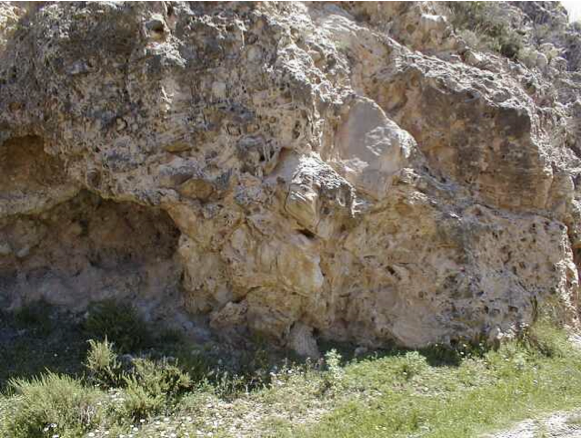 Fig. 19. Cortes de Tajuña Fm. at Moneva. The cavities give a typical aspect to the Carniolas. Also, some stratification can partly be observed. A breccia zone occurs in the lower part to the left. The maximum size of the components does not exceed 2 m.
Fig. 19. Cortes de Tajuña Fm. at Moneva. The cavities give a typical aspect to the Carniolas. Also, some stratification can partly be observed. A breccia zone occurs in the lower part to the left. The maximum size of the components does not exceed 2 m.
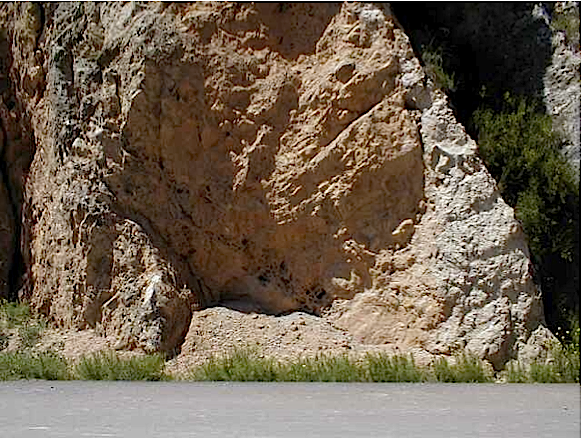 Fig. 20. Cortes de Tajuña Fm. at Moneva showing the typical cavities of the Carniolas and collapse structures.
Fig. 20. Cortes de Tajuña Fm. at Moneva showing the typical cavities of the Carniolas and collapse structures.
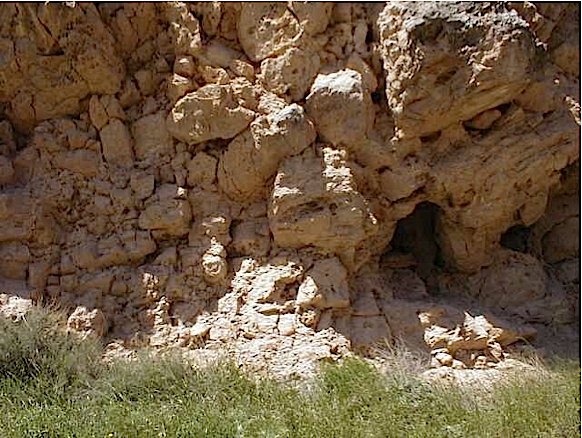 Fig. 21. Cortes de Tajuña Fm. at Moneva. Detail of a collapse zone. The maximum size of the breccia components does not exceed 2 m. Different from the megabreccia, no clasts wrapped in a carbonate crust can be observed, which holds true also for all other Cortes de Tajuña Fm. outcrops so far visited.
Fig. 21. Cortes de Tajuña Fm. at Moneva. Detail of a collapse zone. The maximum size of the breccia components does not exceed 2 m. Different from the megabreccia, no clasts wrapped in a carbonate crust can be observed, which holds true also for all other Cortes de Tajuña Fm. outcrops so far visited.
In the impact model for the Azuara structure, the megabreccia has originated in the beginning modification stage of the impact cratering process by the simultaneous action of the yet ongoing excavation flow and the collapse/rebound of the transient crater (Fiebag, 1988; Katschorek, 1990; Ernstson & Fiebag, 1992) (Fig. 22). During this simultaneous action, relative movements and counter movements of adjacent layers in the stratigraphic sequence led to the immense internal brecciation also testified by the cataclastic flow texture of the breccia matrix. There is a convincing explanation that the megabrecciation is not observed in the complete zone of the outer ring but concentrates on the Carniolas and Liassic limestone layers. The brecciated limestones are deposited on top of the Keuper marls which, apart from the Lower Tertiary, are the only incompetent unit of some thickness (50 – 200 m) within the Azuara stratigraphy and could have acted as a kind of lubricant.
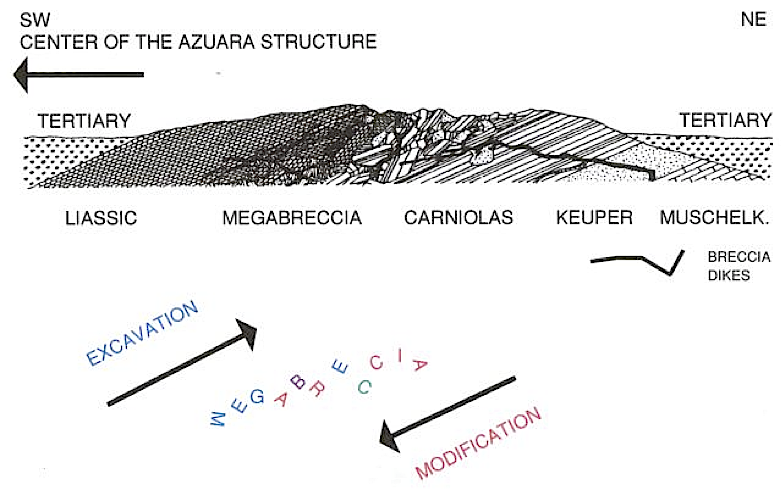 Fig.22. Sketch explaining the formation of the megabreccia in the beginning modification stage of impact cratering (from Ernstson et al, 2001).
Fig.22. Sketch explaining the formation of the megabreccia in the beginning modification stage of impact cratering (from Ernstson et al, 2001).
Summarizing, there is no impact advocate who doubts the existence of the Cortes de Tajuña Fm. and its widespread occurrence throughout the Iberian system, and nobody doubts its formation by dissolution, collapse or related processes. On the other hand, we well dispute that in the areas near Belchite, Almonacid de la Cuba and Herrera de los Navarros, the megabreccia layer corresponds to the Cortes de Tajuña Fm. This, e.g., is simply shown by Liassic, stratigraphically posterior layers also affected by the megabrecciation (see Fig. 10). This situation has always been pointed out by Fiebag (1988), Katschorek (1990), and Ernstson & Fiebag (1992) but is always withheld by the non-impact advocates. If the Cortes de Tajuña Fm. was originally deposited in these zones, it was affected by the impact and transformed to what is today the megabreccia. And as can simply be deduced, the age of the megabreccia coincides with the age of the impact event, and thus the megabreccia formed in the Upper Eocene or Oligocene.
References
- Aurell, M., Gonzalez, A., Perez, A., Guimerá, J., Casas, A. y Salas, R (1993): Discusión of „The Azuara impact structure (Spain): New insights from geophysical and geological investigations„ by K. Ernstson and J. Fiebag. Geol. Rundsch. 82, 750-755.
- Aurell, M., Meléndez, A., San Roman, J., Guimera, A., Roca, E., Salas, R., Alonso, A. y Mas, R (1992): Tectónica sinsedimentaria distensiva en el límite Triásico-Jurásico en la Cordillera Ibérica. Actas III Cong. Geol. Esp. 1, 50-54.
- Aurell, M. (1994): Discusión sobre algunas de las evidencias presentadas a favor del impacto meteorítico de Azuara, en „Extinción y Registro Fósil„ Cuadernos interdisciplinares nº 5 del Seminario Interdisciplinar de la Universidad de Zaragoza. Pags. 59-74.
- Aurell, M., Bádenas, B., Casas, A. y Alberto, S. (2001): La geología del parque cultural del Río Martín. Edit Asociación Parque Cultural del Río martín: Zaragoza. 171 pp.
- Cortes, A.L. (1994): Geometría y cinemática de las estructuras alpinas en el sector Cariñena-Belchite (Borde norte de la Cordillera Ibérica). Tesis de Licenciatura, Universidad de Zaragoza, 171 pp.
- Cortés, A.L. y Martínez, B. (1999): Controversia científica para el aula: ¿ Tiene la cubeta de Azuara un origen extraterrestre?. Enseñanza de las Ciencias de la Tierra, 7.2, 143-157.
- Ernstson, K., Claudin, F. & Rampino, M. (2001): A fieldguide to the Azuara impact structure (and its Rubielos de la Cérida companion crater). Impact workshop on „Impact Markers in the Stratigraphic Record„ Granada (Spain). Stop nº 5.
- Giner, J. (1978): Origen y significado de las brechas del Lías de la Mesa de Prades (Tarragona). Estud. Geol. 34, 529-533.
- Goy, A., Gomez, J.J.y Yebenes, A. (1976): El Jurásico de la Cordillera Ibérica (mitad norte): unidades litoestratigráficas. Estud. Geolo. 32, 391-423.
- Salas, R (1986): El cicle Juràssic al marge oriental d’Ibèria, en „Història Natural dels Països Catalans, Geologia I„, edit Enciclopedia Catalana: Barcelona, 292-306.







































































